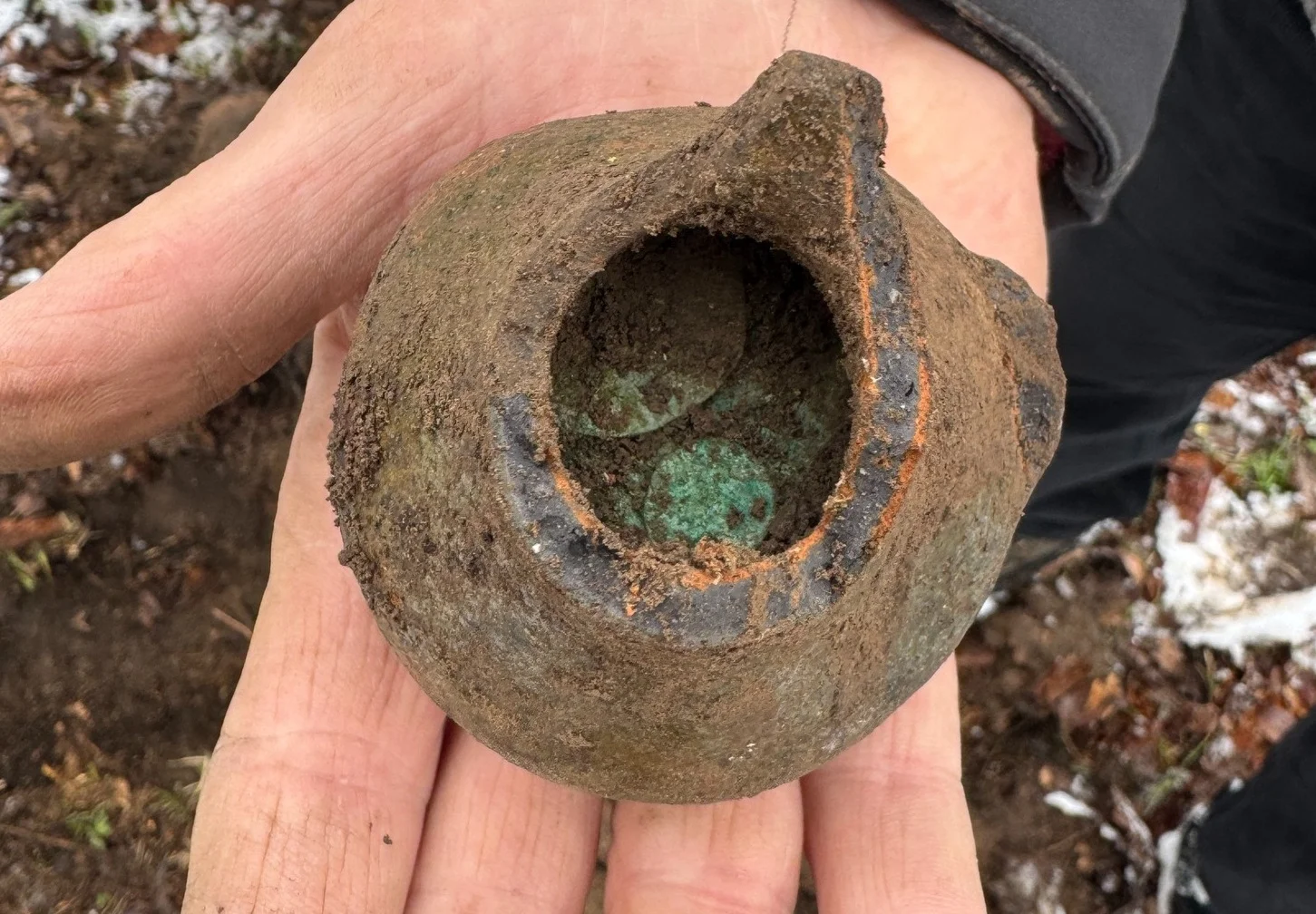A group of metal detectorists have unearthed a hoard of 600 medieval coins during a survey of the forests near Bochnia, a town on the river Raba in southern Poland.
The hoard was found buried in a ceramic pot, which consists of hundreds of silver coins and rare gold ducats from the 15th century AD.
The discovery was immediately reported to the regional heritage office in Tarnów, who sent archaeologists from the Fischer Museum in Bochnia to assist in the recovery.
To preserve the pot and its contents, the hoard was carefully excavated under controlled conditions at AGH University in Kraków, one of Poland’s leading technical institutions.
In completion of the micro-excavation, the final count included 592 silver Jagiellonian denarii, 26 half-groschen in two sizes, and four gold ducats struck during the reign of Sigismund of Luxembourg (1387–1437), who ruled as Holy Roman Emperor and King of Hungary and Bohemia.
Specialists believe the find reflects Bochnia’s significance as a centre of commerce in the late Middle Ages. Located near the royal salt mines, the town prospered from trade networks that stretched across Central Europe. The hoard may have represented a merchant’s savings or an emergency reserve hidden during political unrest.
The coins and their ceramic container are now undergoing conservation at the Stanisław Fischer Museum. Once stabilised, they will go on permanent display.
Header Image Credit : AGH University in Kraków
Image Sources : AGH University in Kraków





